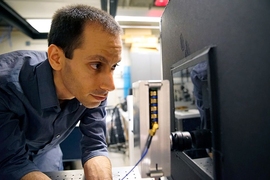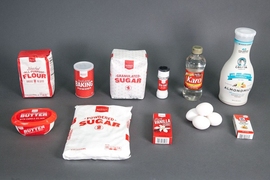Demonstrating a means of applying machine vision and signal processing to a complex mechanical system has won MIT Aeronautics and Astronautics Department graduate students Sebastien Mannai and Antoni Rosinol Vidal first prize in the multi-university FutureMakers Challenge.
The FutureMakers Challenge involved students from five U.S. universities who worked on next-generation software concepts to foster innovation, and to develop the next-generation digital engineering workforce. The competition was hosted by the Siemens Corporate Technology in collaboration with MIT and the Institute’s Industrial Liaison Program. Similar challenges were held at Carnegie Mellon University, the University of California at Berkeley, Princeton University, Rutgers University, and Georgia Tech.
The competition gave student teams 24 hours to create software solutions for Siemens' Mindsphere cloud-based operating system that can be applied to emerging technology trends such as cybersecurity, machine learning, artificial intelligence, industrial automation, and smart manufacturing.
Winners were selected by a panel of Siemens experts based on "innovation, out-of-the-box thinking, and relevance to market needs.”
Mannai and Rosinol Vidal demonstrated the utility of machine vision and signal processing in a complex mechanical engineering system. Machine vision refers to applications in which a combination of hardware and software provide operational guidance, based on the capture and processing of images, for devices in the execution of their functions. The students’ concept uses existing CCTV video feeds to reconstruct at the surface in real-time 3-D the movement of an oil well and use that data to infer the motion of the pump deep beneath the ground. By integrating a mechanical engineering system with an artificial intelligence system, monitoring and control of engineering systems via machine vision can lead to equipment safety and performance enhancements.
Siemens will invest $140,000 to support follow-up MIT research on Mannai and Rosinol Vidal’s idea.
Mannai is a PhD candidate in the Gas Turbine Laboratory (GTL), where his advisor is Choon Sooi Tan. Rosinol Vidal, also a PhD candidate, is associated with the Sensing, Perception, Autonomy, and Robot Kinetics Laboratory (SPARK) and is advised by Assistant Professor Luca Carlone.
The students expect to apply the resources provided by Siemens to demonstrate their conceptual framework on a gas turbine engine subsystem or a wind turbine model. This will be first implemented on a computational test bed to be followed by applying the computational framework to a hardware system of interest to Siemens for assessment.










